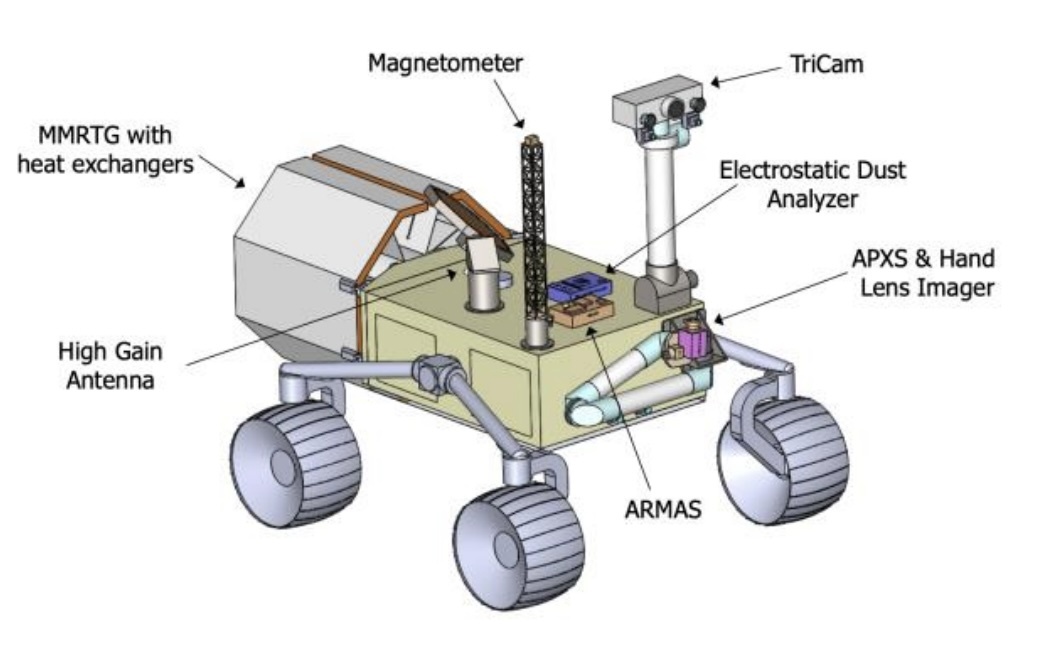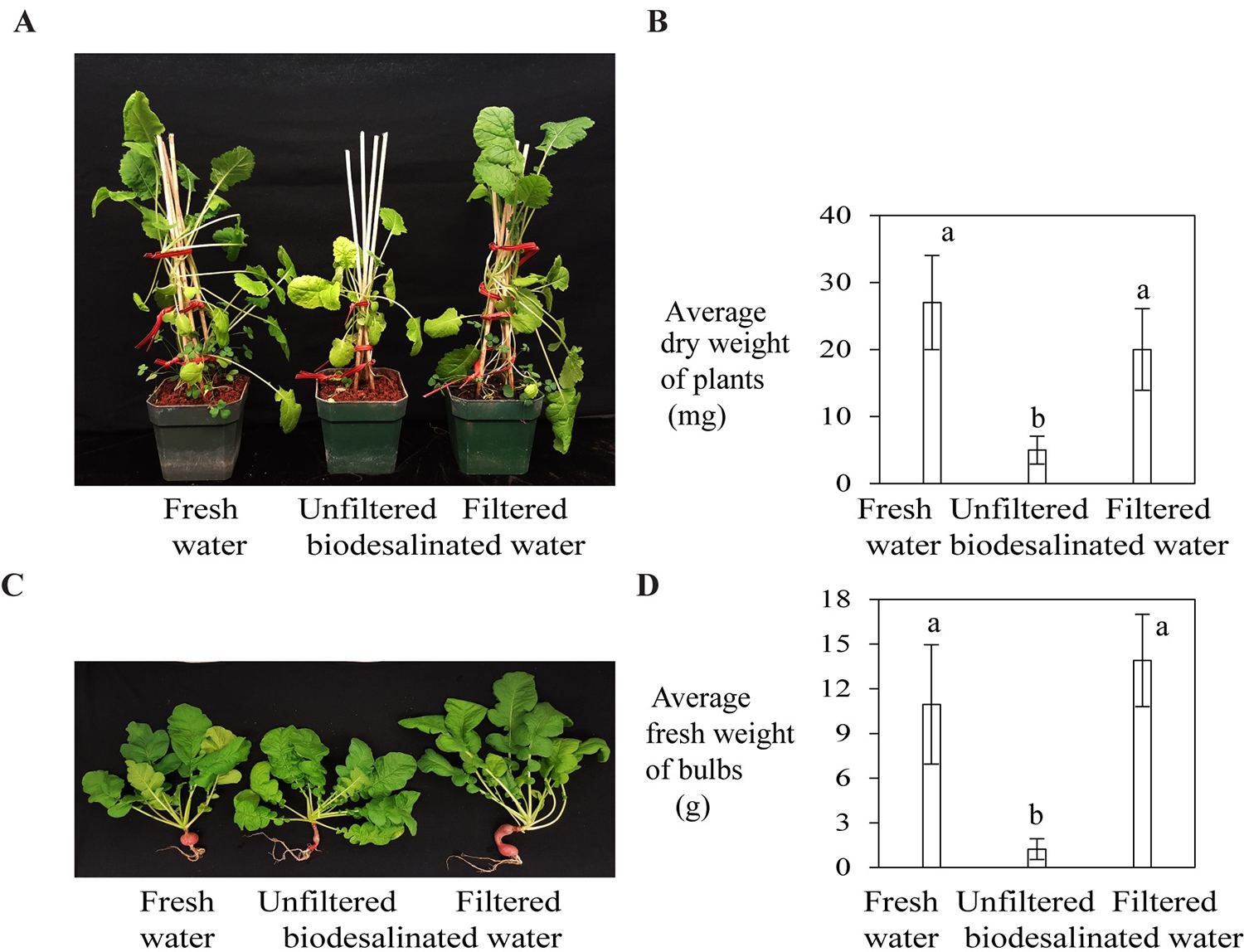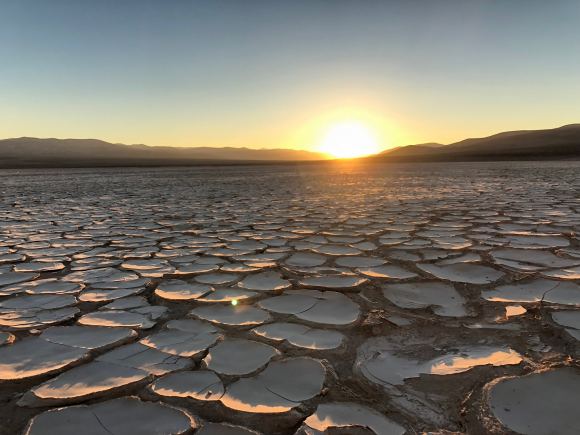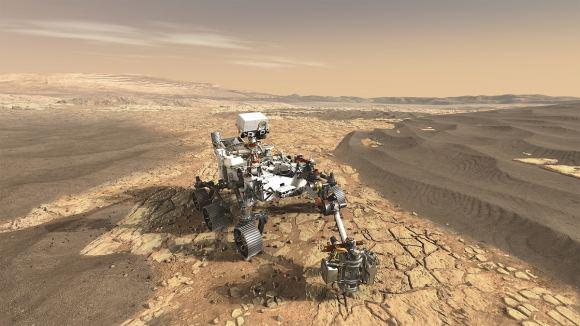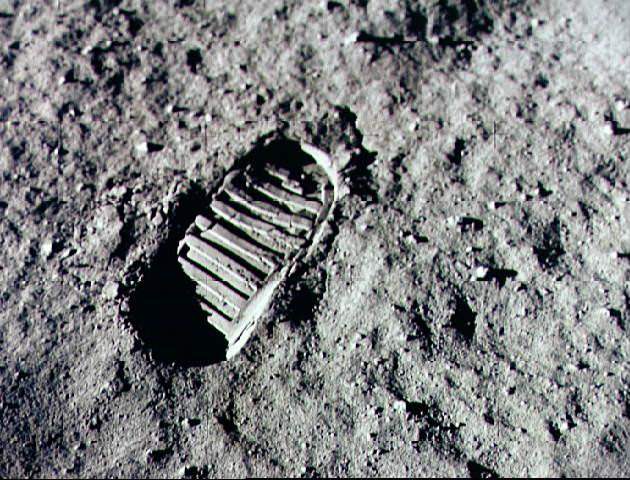Travelling to Mars has its own challenges. The distance alone makes the journey something of a mission in itself. Arrive though, and the handwork has only just begun. Living and surviving on Mars will be perhaps humans biggest challenge yet. It would be impossible to take everything along with you to survive so instead, it would be imperative to ‘live off the land’ and produce as much locally as possible. A new rover called AgroMars will be equipped with a number of agriculture related experiments to study the make up of the soil to assess its suitability for growing food.
Continue reading “Want to Start a Farm on Mars? This Rover Will Find Out if it’s Possible”The First Crops on Mars Should be Alfalfa and Cyanobacteria. Then Comes Tastier Plants
Mark Watney can keep his potatoes. Real astronauts should grow alfalfa.
Continue reading “The First Crops on Mars Should be Alfalfa and Cyanobacteria. Then Comes Tastier Plants”Now You Can Buy Fake Mars Dirt for $20/Kilogram. Obviously You’ll Want to Know if Potatoes Can Grow in it
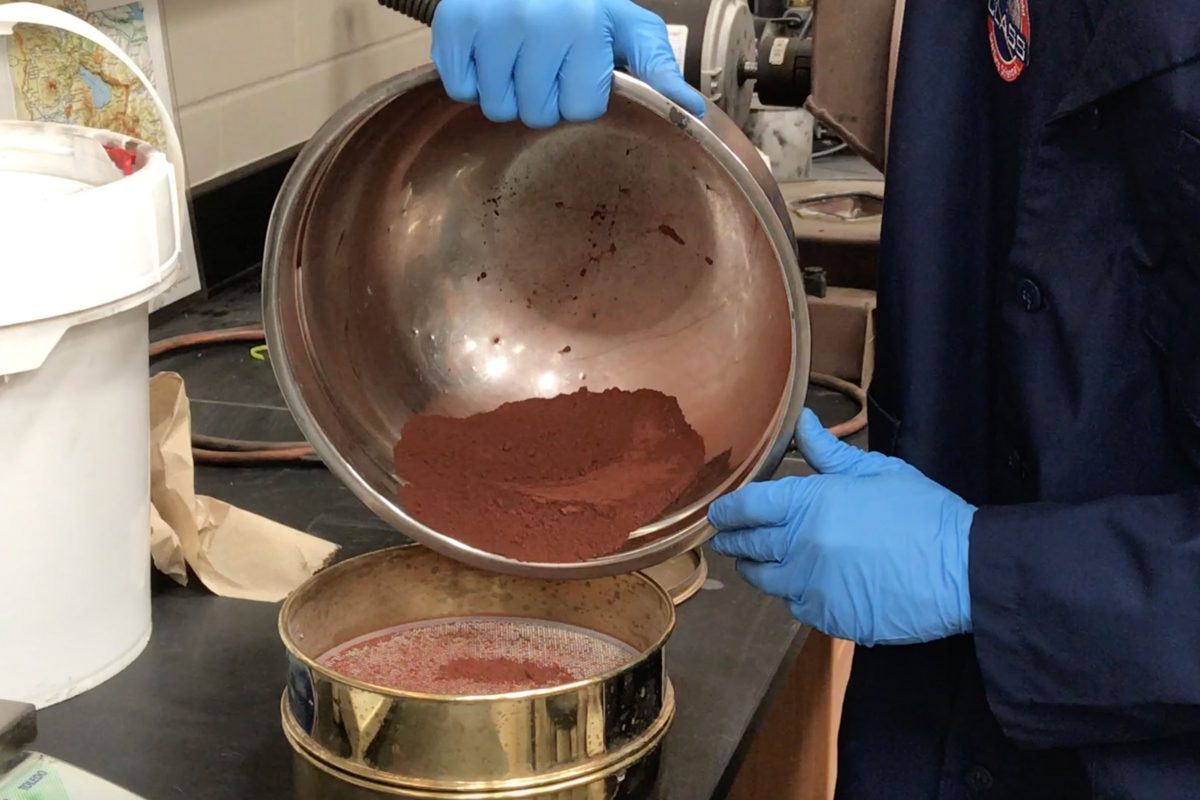
When it comes time to begin conducting regular crewed missions to Mars, and perhaps even establishing a permanent outpost there, astronauts and potential Martian settlers will have to know how to work with the local environment. Remember that scene in The Martian where astronaut Mark Whatney (Matt Damon) is forced to grow his own food in a plot of Martian soil? Well, it will be much like that, except with a lot more mouths to feed.
Naturally, knowing if this can be done requires a great deal of research and experimentation. To assist these efforts, a team of astrophysicists from the University of Central Florida (UCF) recently developed a scientifically based, standardized method for creating Martian and asteroid soil simulants. This imitation Martian dirt, which goes for $20 a kilogram (about $10 a pound), will help researchers determine what it takes to grow crops on the Red Planet.
Mars is 1000x Drier Than the Driest Places on Earth
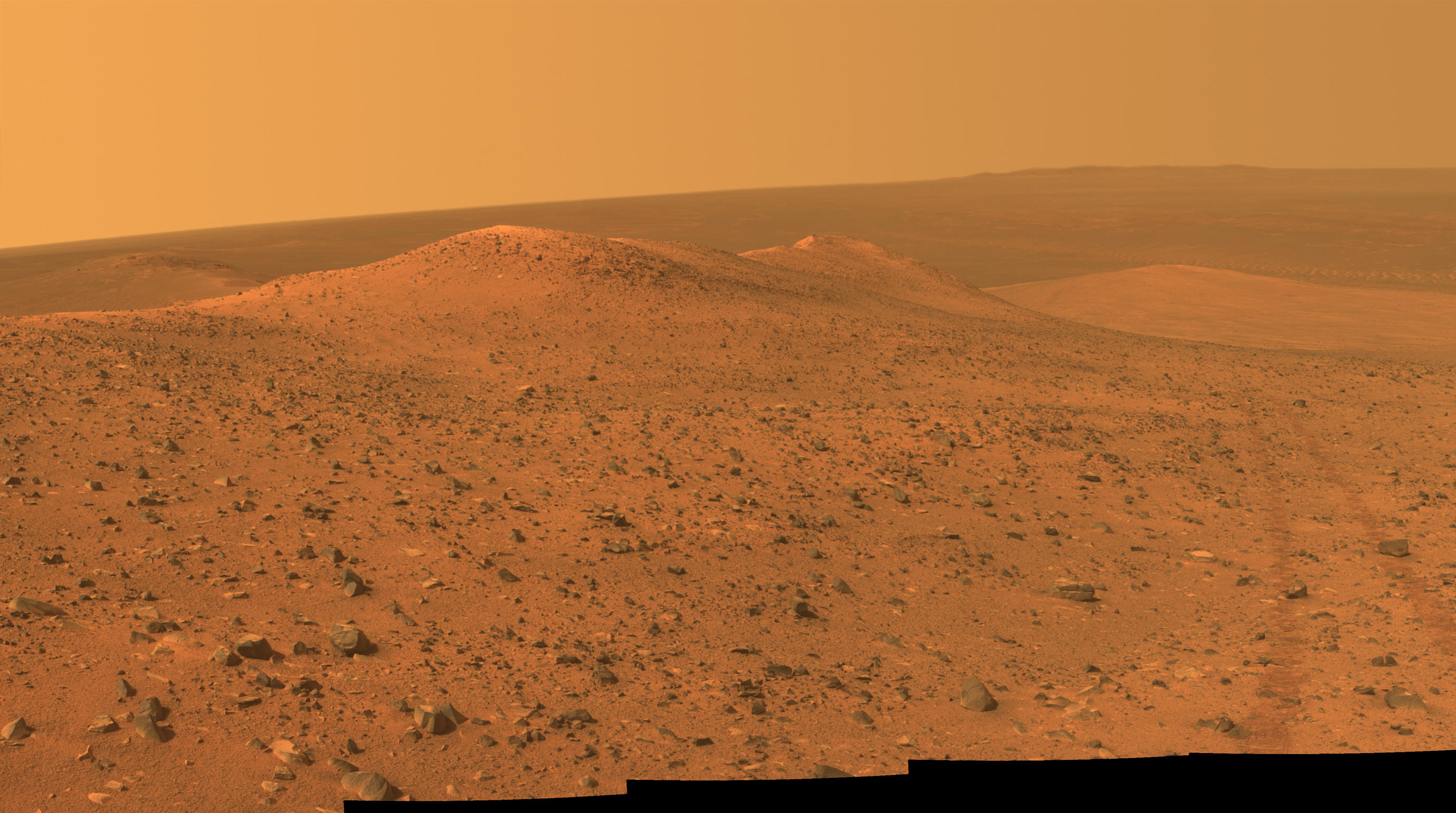
For generations, many have dreamed about the day when it would be possible to set foot on Mars – aka. “Earth’s Twin” planet. And in the past few years, multiple orbiters, landers and rovers have revealed evidence of past water on Mars, not to mention the possibility that water still exists underground. These findings have fueled the desire to send crewed missions to Mars, not to mention proposals to establish a colony there.
However, this enthusiasm may seem a little misguided when you consider all the challenges the Martian environment presents. In addition to it being very cold and subject to a lot of radiation, the surface of Mars today is also extremely dry. According to a new study led by researchers from NASA’s Ames Research Center, Martian soil is roughly 1000 times drier than some of the driest regions on Earth.
The study, titled “Constraints on the Metabolic Activity of Microorganisms in Atacama Surface Soils Inferred from Refractory Biomarkers: Implications for Martian Habitability and Biomarker Detection“, recently appeared in the journal Astrobiology. The study was led by members from NASA Ames Research Center and included researchers from the Georgia Institute of Technology, the Carl Sagan Center at the SETI Institute, the Centro de Astrobiologia (INTA-CSIC), the NASA Goddard Space Flight Center, and the Massachusetts Institute of Technology.
For the sake of their study, the research team sought to determine if microorganisms can survive under the types of conditions present on Mars. To answer this question, the team traveled to the the Atacama Desert in Chile, a 1000 km (620 mi) strip of land on South America’s west coast. With an average rainfall of just 1 to 3 mm (0.04 to 0.12 in) a year, the Atacama desert is known as the driest nonpolar place in the world.
However, the Atacama desert is not uniformly dry, and experiences different levels of precipitation depending on the latitude. From the southern end to the northern end, annual precipitation shifts from a few millimeters of rain per year to only a few millimeters of rain per decade. This environment provides an opportunity to search for life at decreasing levels of precipitation, thus allowing researchers to place constraints on microorganism survivability.
It is at the northern end of the desert (in what is known as the Antofagasta region) where conditions become most Mars-like. Here, the average annual rainfall is just 1 mm a year, which has made it a popular destination for scientists looking to simulate a Martian environment. In addition to seeing if microbes could survive in these dry conditions, the team also sought to determine if they were capable of growth and reproduction.
As Mary Beth Wilhelm – an astrobiologist at the Georgia Institute of Technology, NASA’s Ames Research Center, and lead author of the new study – explained in a recent NASA press release:
“On Earth, we find evidence of microbial life everywhere. However, in extreme environments, it’s important to know whether a microbe is dormant and just barely surviving, or really alive and well… By learning if and how microbes stay alive in extremely dry regions on Earth, we hope to better understand if Mars once had microbial life and whether it could have survived until today.”
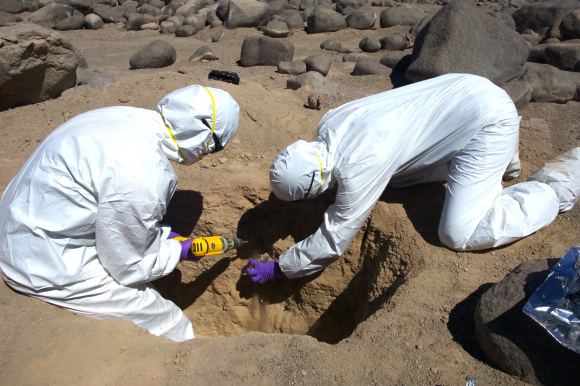
After collecting soil samples from across the Atacama Desert and brought them back to their lab at Ames, the research team began performing tests to see if their microorganism samples showed any indication of stress markers. These are a key way in which life can be shown to be growing, since organisms in a dormant state (i.e. that are just surviving) show no signs of stress markers.
Specifically, they looked for changes in the lipid structure of the cells outer membranes, which typically become more rigid in response to stress. What they found was that in the less dry parts of the Atacama Desert, this stress marker was present; but strangely, these same markers were missing in the driest regions of the desert where microbes would be more stressed.
Based on these and other results, the team concluded that there is a transition line for microorganisms in environments like the Atacama Desert. On one side of this line, the presence of minute amounts of water is enough for organisms to still be able to grow. On the other side, the environment is so dry that organisms can survive but will not grow and reproduce.
The team was also able to find evidence of microbes that had been dead in the Atacama soil samples for at least 10,000 years. They were able to determine this by examining the amino acids of the microbes, which are the building blocks of proteins, and examining the rate at which their structure changed. This find was rather surprising, seeing as how it is extremely rare that the remnant of ancient life be found on the surface of Earth.
Given that Mars is 1,000 times drier than even the driest parts of Atacama, these results were not encouraging news for those hoping that microbial life will still be found there. However, the fact that the remnants of past microbial life were found in the driest areas of Chile’s desert – which would have existed when conditions were wetter and were well-preserved – is very good news when it comes to the search for past life on Mars.
Essentially, if microbial life did exist on Mars back when it was a warmer, wetter environment, traces of that ancient life might still exist. As Wilhelm explained:
“Before we go to Mars, we can use the Atacama like a natural laboratory and, based on our results, adjust our expectations for what we might find when we get there. Knowing the surface of Mars today might be too dry for life to grow, but that traces of microbes can last for thousands of years helps us design better instruments to not only search for life on and under the planet’s surface, but to try and unlock the secrets of its distant past.”
In the future, missions like NASA’s Mars 2020 rover will be seeking to procure samples of Martian soil. If NASA’s proposed “Journey to Mars” takes place by the 2030s as planned, these samples could then be returned to Earth for analysis. With luck, these soil samples will reveal evidence of past life and prove that Mars was once a habitable planet!
Further Reading: NASA
Good News, Martian Colonists Can Eat All the Radishes They Want
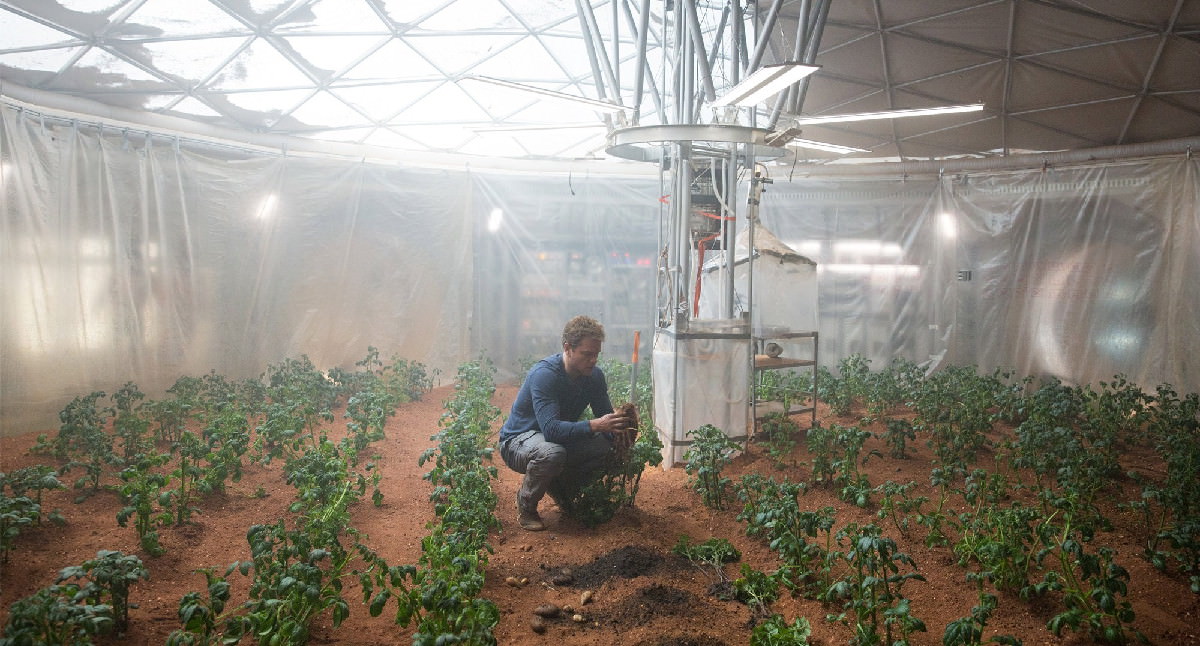
When your stated purpose is to send settlers to Mars by 2026, you’re sure to encounter a lot of skepticism. And that is exactly what Dutch entrepreneur Bas Lansdorp has been dealing with ever since he first went public with MarsOne in 2012. In fact, in the past four years, everything from the project’s schedule, technical and financial feasibility, and ethics have been criticized by scientists, engineers and people in the aerospace industry.
However, Lansdorp and his organization have persevered, stating that they intend to overcome all the challenges in sending people on a one-way trip to the Red Planet. And in their most recent statement, MarsOne has announced that they have addressed the all-important issue of what their settlers will eat. In an experiment that feels like it was ripped from the The Martian, MarsOne has completed testing different types of crops in simulated Martian soil, to see which ones could grow on Mars.
Located in the Dutch town of Nergena, MarsOne maintains a glasshouse complex where they have been conducting experiments. These experiments took place in 2013 and 2015, and involved Martian and Lunar soil simulants provided by NASA, along with Earth soil as a control group.

Using these, a team of ecologists and crop scientists from the Wageningen University & Research Center have been testing different kinds of seeds to see which ones will grow in a Lunar and Martian environment. These have included rye, radishes, garden cress and pea seed. And earlier this year, they added a crop of tomatoes and potatoes to the mix.
As Dr. Wieger Wamelink, the ecologist who led the experiments, told Universe Today via email:
“We started our first experiment in 2013 (published in Plos One in 2014) to investigate if it was possible to grow plants in Mars and moon soil simulants. We assume that plants will be grown indoors, because of the very harsh circumstances on both Mars and moon, very cold, no or almost no atmosphere and way to much cosmic radiation. That first experiment only had a few crops and mostly wild plants and clovers (for nitrogen binding from the atmosphere to manure the soil).”
After confirming that the seeds would germinate in the simulated soil after the first year, they then tested to see if the seeds from that harvest would germinate in the same soil to create another harvest. What they found was quite encouraging. In all four cases, the seeds managed to germinate nicely in both Martian and Lunar soil.
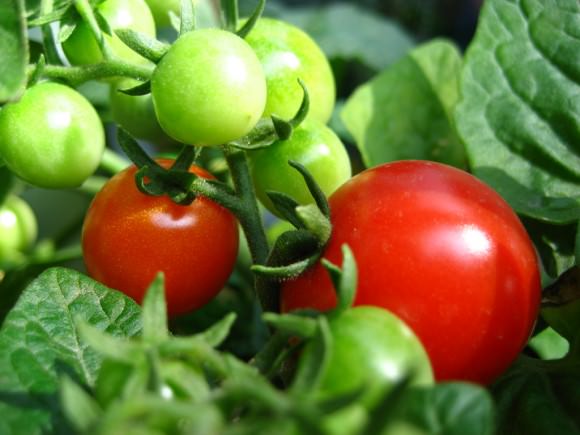
“Our expectation were very low,” said Wamelink, “so we were very surprised that on the Mars soil simulant plants grew rather well and even better than on our nutrient poor control earth soil. There were also problems, the biggest that it was very difficult to keep the soil moist and that though on Mars soil simulant there was growth it was not very good, i.e. the amount of biomass formed was low.”
And while they didn’t grow as well as the control group, which was grown in Earth soil, they did managed to produce time and again. This was intrinsic to the entire process, in order to make sure that any crops grown on Mars would have a full life-cycle. Being able to grow crops, replant seeds, and grow more would eliminate the need to bring new seeds for every crop cycle, thus ensuring that Martian colonists could be self-sufficient when it came to food.
In 2015, they conducted their second experiment. This time around, after planting the seeds in the simulated soil, they added organic matter to simulate the addition of organic waste from a previous crop cycle. And on every Friday, when the experiments were running, they added nutrient solution to mimic the nutrients derived from fecal matter and urine (definite echoes of The Martian there!).
Once again, the results were encouraging. Once again, the crops grew, and the addition or organic matter improved the soil’s water-holding capacity. Wamelink and his team were able to harvest from many of the ten crops they had used in the experiment, procuring another batch of radishes, tomatoes and peas. The only crop that did poorly was the batch of spinach they had added.
This year, the team’s experiments were focused on the issue of food safety. As any ecologist knows, plants naturally absorb minerals from their surrounding environment. And tests have shown that soils obtained from the Moon and Mars show concentrations of heavy metals and toxins – such as arsenic, cadmium, copper, lead, and iron (which is what gives Mars its reddish appearance). As Wamelink described the process:
“Again we have ten crops, but slightly different crops from last year; we included green beans and potatoes (best food still and Mark Watney also seems to love potatoes). Also repeated was the addition of organic matter, to mimic the addition of the plant parts that are not eaten from a previous growth cycle. Also new is the addition of liquid manure, to mimic the addition of human faeces… We know that both Mars and moon soil simulants contain heavy metals, like led, copper, mercury and chrome. The plants do not care about this, however when they end up in the eaten parts then they could poison the humans that eat them. There we have to test if it is safe to eat them.”
And again, the results were encouraging. In all cases, the crops showed that the concentrations of metals they contained were within human tolerances and therefore safe to eat. In some cases, the metal concentrations were even lower than that found those grown using potting soil.
“We now tested four species we harvested last year as a preliminary investigation and it shows that luckily there are no harmful quantities present in the fruits, so it is safe to eat them,” said Wamelink. “We will continue these analyses, because for the FDA they have to be analysed in fresh fruits and vegetables, where we did the analyses on dried material. Moreover we will also look at the content of large molecules, like vitamins, flavonoids (for the taste) and alkaloids (for toxic components).”
However, the Wageningen UR team hopes to test all ten of the crops they have grown in order to make sure that everything grown in Martian soil will be safe to eat. Towards this end, Wageningen UR has set up a crowdfunding campaign to finance their ongoing experiments. With public backing, they hope to show that future generations will be able to be self-sufficient on Mars, and not have to worry about things like arsenic and lead poisoning.
As an incentive, donors will receive a variety of potential gifts, which include samples of the soil simulant used for the experiment. But the top prize, a a dinner based on the harvest, is being offered to people contributing €500 ($555.90 USD) or more. In what is being called the first “Martian meal” this dinner will take place once the experiment is complete and will of course include Martian potatoes!
Looking ahead, Wamelink and his associates also hope to experiment crops that do not rely on a seed-to-harvest cycle, and are not harvested annually.These include fruit trees so that they might be able to grow apples, cherries, and strawberries in Martian soil. In addition, Wamelink has expressed interest in cultivating lupin seeds as a means of replacing meat in the Martian diet.
And when it comes right down to it, neither MarsOne or the Wageningen UR team are alone in wanting to see what can be grown on Mars or other planets. For years, NASA has also been engaged in their own tests to see which crops can be cultivated on Mars. And with the help of the Lima-based International Potato Center, their latest experiment involves cultivating potatoes in samples of Peruvian soil.
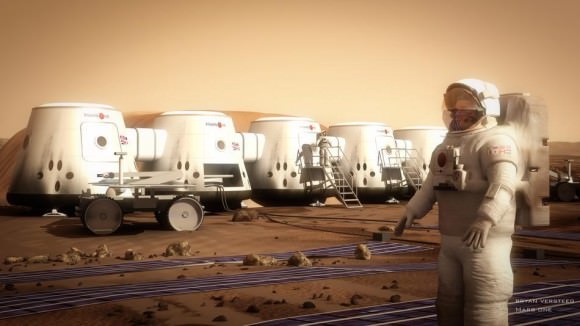
For hundreds of years, the Andean people have been cultivating potatoes in the region. And given the arid conditions, NASA believes it will serve as a good facsimile for Mars. But perhaps the greatest draw is the fact cultivating potatoes in a simulated Martian environment immediately calls to mind Matt Damon in The Martian. In short, it’s a spectacular PR move that NASA, looking to drum up support for its “Journey to Mars“, cannot resist!
Naturally, experiments such as these are not just for the sake of meeting the challenges posed by MarsOne’s plan for one-way crewed missions to Mars. Alongside the efforts of NASA and others, they are part of a much larger effort to address the challenges posed by the renewed era of space exploration we find ourselves embarking on.
With multiple space agencies and private corporations (like SpaceX) hoping to put buts back on the Moon and Mars, and to establish permanent bases on these planets and even in the outer Solar System, knowing what it will take for future generations of colonists and explorers to sustain themselves is just good planning.
Further Reading: Mars Exchange
What is Lunar Regolith?
When you’re walking around on soft ground, do you notice how your feet leave impressions? Perhaps you’ve tracked some of the looser earth in your yard into the house on occasion? If you were to pick up some of these traces – what we refer to as dirt or soil – and examine them beneath a microscope, what would you see?
Essentially, you would be seeing the components of what is known as regolith, which is a collection of particles of dust, soil, broken rock, and other materials found here on Earth. But interestingly enough, this same basic material can be found in other terrestrial environments as well – including the Moon, Mars, other planets, and even asteroids.
Definition:
The term regolith refers to any layer of material covering solid rock, which can come in the form of dust, soil or broken rock. The word is derived from the combination of two Greek words – rhegos (which means “blanket”) and lithos (which means “rock).
Earth:
On Earth, regolith takes the form of dirt, soil, sand, and other components that are formed as a result of natural weathering and biological processes. Due to a combination of erosion, alluvial deposits (i.e. moving water deposing sand), volcanic eruptions, or tectonic activity, the material is slowly ground down and laid out over solid bedrock.

It can be made up of clays, silicates, various minerals, groundwater, and organic molecules. Regolith on Earth can vary from being essentially absent to being hundreds of meters thick. Its can also be very young (in the form of ash, alluvium, or lava rock that was just deposited) to hundreds of millions of years old (regolith dating to the Precambrian age occurs in parts of Australia).
On Earth, the presence of regolith is one of the important factors for most life, since few plants can grow on or within solid rock and animals would be unable to burrow or build shelter without loose material. Regolith is also important for human beings since it has been used since the dawn of civilization (in the form of mud bricks, concrete and ceramics) to build houses, roads, and other civil works.
The difference in terminology between “soil” (aka. dirt, mud, etc.) and “sand” is the presence of organic materials. In the former, it exists in abundance, and is what separates regolith on Earth from most other terrestrial environments in our Solar System.
The Moon:
The surface of the Moon is covered with a fine powdery material that scientists refer to it as “lunar regolith”. Nearly the entire lunar surface is covered with regolith, and bedrock is only visible on the walls of very steep craters.

The Moon regolith was formed over billions of years by constant meteorite impacts on the surface of the Moon. Scientists estimate that the lunar regolith extends down 4-5 meters in some places, and even as deep as 15 meters in the older highland areas.
When the plans were put together for the Apollo missions, some scientists were concerned that the lunar regolith would be too light and powdery to support the weight of the lunar lander. Instead of landing on the surface, they were worried that the lander would just sink down into it like a snowbank.
However, landings performed by robotic Surveyor spacecraft showed that the lunar soil was firm enough to support a spacecraft, and astronauts later explained that the surface of the Moon felt very firm beneath their feet. During the Apollo landings, the astronauts often found it necessary to use a hammer to drive a core sampling tool into it.
Once astronauts reached the surface, they reported that the fine moon dust stuck to their spacesuits and then dusted the inside of the lunar lander. The astronauts also claimed that it got into their eyes, making them red; and worse, even got into their lungs, giving them coughs. Lunar dust is very abrasive, and has been noted for its ability to wear down spacesuits and electronics.

The reason for this is because lunar regolith is sharp and jagged. This is due to the fact that the Moon has no atmosphere or flowing water on it, and hence no natural weathering process. When the micro-meteoroids slammed into the surface and created all the particles, there was no process for wearing down its sharp edges.
The term lunar soil is often used interchangeably with “lunar regolith”, but some have argued that the term “soil” is not correct because it is defined as having organic content. However, standard usage among lunar scientists tends to ignore that distinction. “Lunar dust” is also used, but mainly to refer to even finer materials than lunar soil.
As NASA is working on plans to send humans back to the Moon in the coming years, researchers are working to learn the best ways to work with the lunar regolith. Future colonists could mine minerals, water, and even oxygen out of the lunar soil, and use it to manufacture bases with as well.
Mars:
Landers and rovers that have been sent to Mars by NASA, the Russians and the ESA have returned many interesting photographs, showing a landscape that is covered with vast expanses of sand and dust, as well as rocks and boulders.

Compared to lunar regolith, Mars dust is very fine and enough remains suspended in the atmosphere to give the sky a reddish hue. The dust is occasionally picked up in vast planet-wide dust storms, which are quite slow due to the very low density of the atmosphere.
The reason why Martian regolith is so much finer than that found on the Moon is attributed to the flowing water and river valleys that once covered its surface. Mars researchers are currently studying whether or not martian regolith is still being shaped in the present epoch as well.
It is believed that large quantities of water and carbon dioxide ices remain frozen within the regolith, which would be of use if and when manned missions (and even colonization efforts) take place in the coming decades.
Mars moon of Deimos is also covered by a layer of regolith that is estimated to be 50 meters (160 feet) thick. Images provided by the Viking 2 orbiter confirmed its presence from a height of 30 km (19 miles) above the moon’s surface.
Asteroids and Outer Solar System:
The only other planet in our Solar System that is known to have regolith is Titan, Saturn’s largest moon. The surface is known for its extensive fields of dunes, though the precise origin of them are not known. Some scientists have suggested that they may be small fragments of water ice eroded by Titan’s liquid methane, or possibly particulate organic matter that formed in Titan’s atmosphere and rained down on the surface.
Another possibility is that a series of powerful wind reversals, which occur twice during a single Saturn year (30 Earth years), are responsible for forming these dunes, which measure several hundred meters high and stretch across hundreds of kilometers. Currently, Earth scientists are still not certain what Titan’s regolith is composed of.
Data returned by the Huygens Probe’s penetrometer indicated that the surface may be clay-like, but long-term analysis of the data has suggested that it may be composed of sand-like ice grains. The images taken by the probe upon landing on the moon’s surface show a flat plain covered in rounded pebbles, which may be made of water ice, and suggest the action of moving fluids on them.
Asteroids have been observed to have regolith on their surfaces as well. These are the result of meteoriod impacts that have taken place over the course of millions of years, pulverizing their surfaces and creating dust and tiny particles that are carried within the craters.

NASA’s NEAR Shoemaker spacecraft produced evidence of regolith on the surface of the asteroid 433 Eros, which remains the best images of asteroid regolith to date. Additional evidence has been provided by JAXA’s Hayabusa mission, which returned clear images of regolith on an asteroid that was thought to be too small to hold onto it.
Images provided by the Optical, Spectroscopic, and Infrared Remote Imaging System (OSIRIS) cameras on board the Rosetta Spacecraft confirmed that the asteroid 21 Lutetia has a layer of regolith near its north pole, which was seen to flow in major landslides associated with variations in the asteriod’s albedo.
To break it down succinctly, wherever there is rock, there is likely to be regolith. Whether it is the product of wind or flowing water, or the presence of meteors impacting the surface, good old fashioned “dirt” can be found just about anywhere in our Solar System; and most likely, in the universe beyond…
We’ve done several articles about the Moon’s regolith here on Universe Today. Here’s a way astronauts might be able to extract water from lunar regolith with simple kitchen appliances, and an article about NASA’s search for a lunar digger.
Want to buy some lunar regolith simulant? Here’s a site that lets you buy it. Do you want to be a Moon miner? There’s lots of good metal in that lunar regolith.
You can listen to a very interesting podcast about the formation of the Moon from Astronomy Cast, Episode 17: Where Did the Moon Come From?
Reference:
NASA

